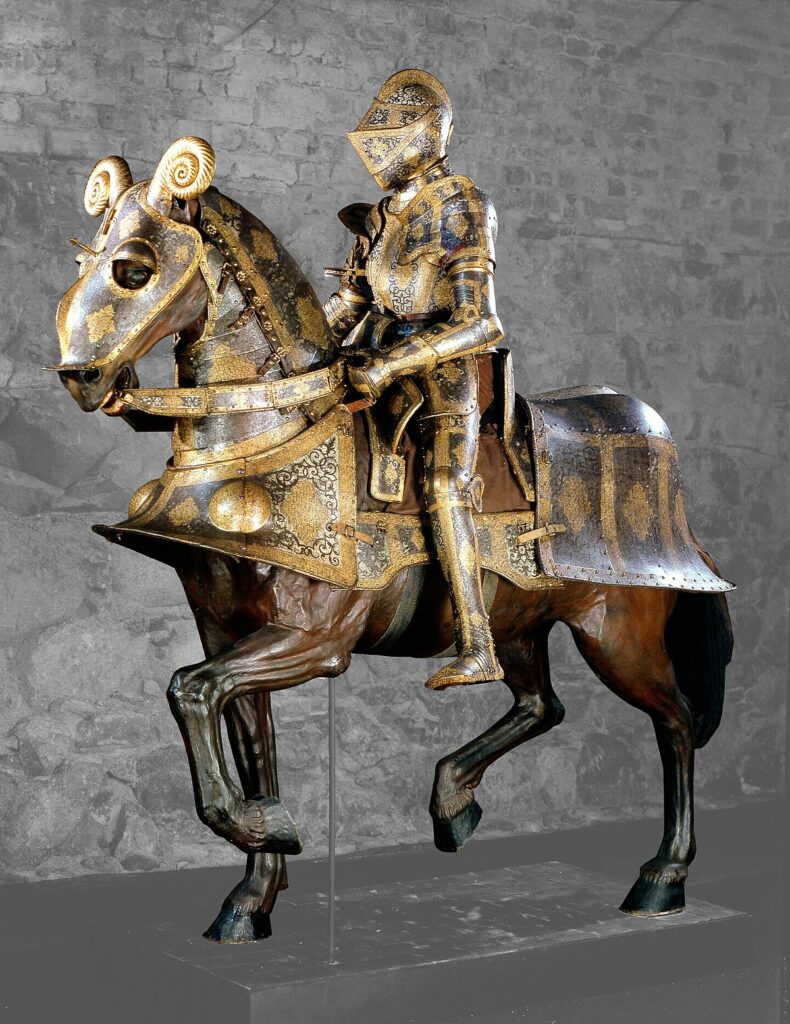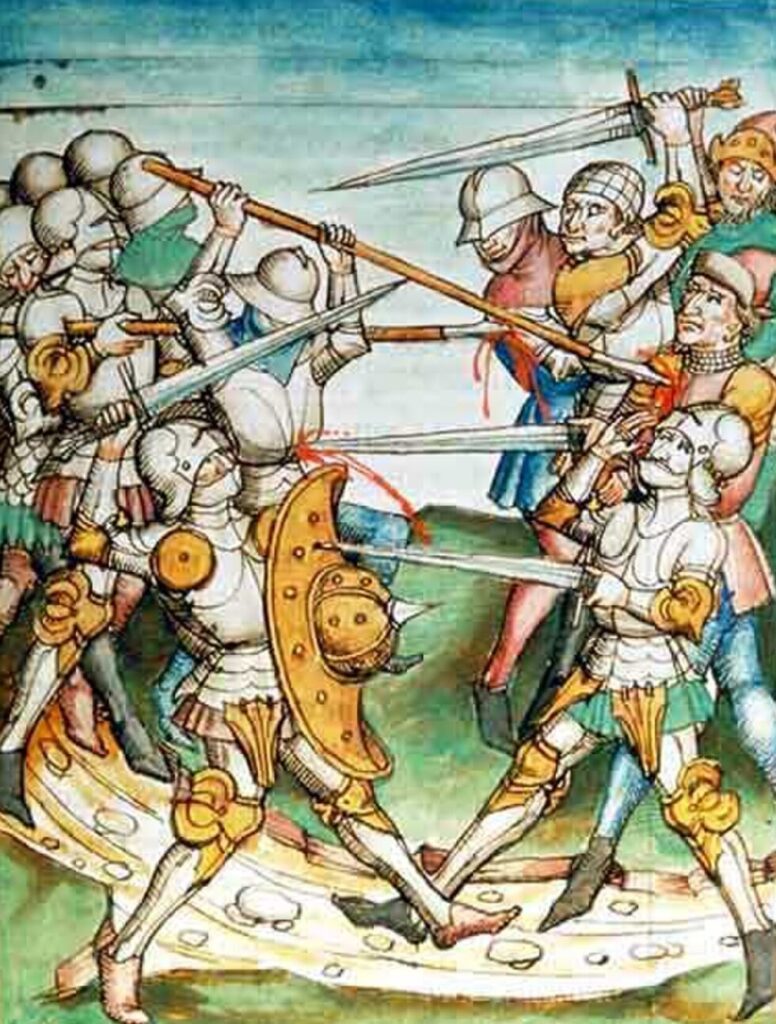Somewhere along the way, film and television got it into their heads that the medieval knight armor were so heavy that it restricted their movement. One common belief is that the armor was so heavy that knights going into battle had to be hoisted onto their horses with the help of a crane.

While going into battle fully protected by armor would be important to a soldier of any era, those of us who have worn body armor in combat will tell you the body armor also has to be functional. After all, if you’re wearing armor, but you can’t kill the enemy or adequately defend yourself, all you’ve done is make yourself a target.
Eventually, the enemy will figure out how to penetrate that armor. Since you can’t get away due to the bulky armor and you can’t take any of it with you, why even go into battle in the first place?
How Heavy Were the Medieval Knight Armor?
The armor most of us think of at the mention of the medieval knight is called full plate armor, which became popular around the high middle ages, around the years 1000 to 1300 AD, reaching its peak in the 1500s. Its decline for use in battle coincided with the rise of the flintlock musket for obvious reasons.
The plates were made of bronze, iron, or steel, and a full suit of armor could weigh between 30 and 60 pounds. While this sounds like a lot of weight, a well-made suit of armor spreads the weight across the entire body, allowing the wearer to run, jump and even swim while wearing it – although the swimmer would have to seriously consider his endurance and abilities.
To put it into perspective, an average American firefighter carries 35-40 pounds of equipment into a burning building. Would they brave that kind of situation in protective gear that restricted their movement? Absolutely not (we hope).

Plate armor protected the wearer from sword slashes, spears, pikes, and blunt objects while giving them the ability to return the same kind of sword slashes and pike thrusts. Knights needed to be in top physical condition to prepare for that kind of combat in full armor. Battles could last for hours or days, and carrying that extra weight could still wear on them after a while.

Knights had complete weight training regimens on top of their combat training, with many wearing the full suit of armor as they trained. The axiom of “train like you fight” has always been an important part of military training, and knights needed it more than anyone. Some even used extra-heavy versions of their weapons and armor in training so they could move and kill more effectively on the battlefield.
Special Training Technique of Jean II Le Maingre
The French knight Jean II Le Maingre developed a special training technique that not only allowed him to endure hours of riding in full armor, fighting battles, and then riding home but also allowed him to mount his horse without his squire’s assistance, climb walls, perform somersaults and even run miles, all while wearing his armor. If you consider that it was his only job and the training would keep him “battlefield ready” – and thus, alive at the end of the battle – then it’s easy to see why knights would put themselves through that kind of training.
We all know the people of the Middle Ages weren’t as intelligent or educated as we are today, but soldiers aren’t stupid. Career soldiers who make it to old age have figured out what it takes to survive combat, and being a slow-moving target on the battlefield isn’t the way to make it to retirement.
Read About Other Military Myths and Legends
If you enjoyed learning about U.S. Expedition to Korea, we invite you to read about other military myths and legends on our blog. You will also find military book reviews, veterans’ service reflections, famous military units and more on the TogetherWeServed.com blog. If you are a veteran, find your military buddies, view historic boot camp photos, build a printable military service plaque, and more on TogetherWeServed.com today.

0 Comments